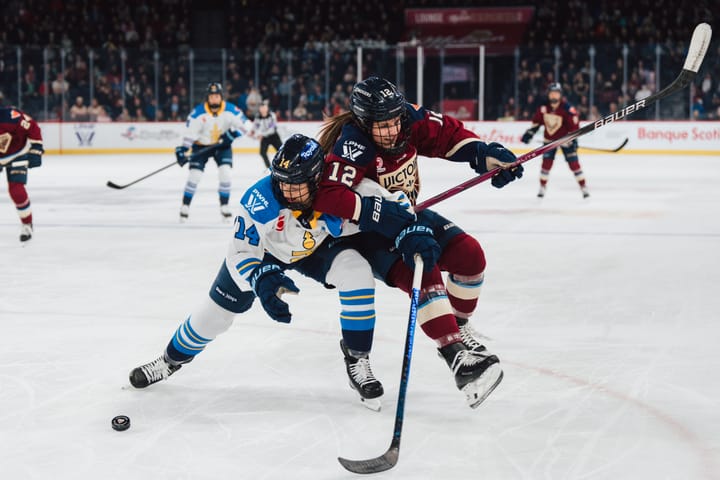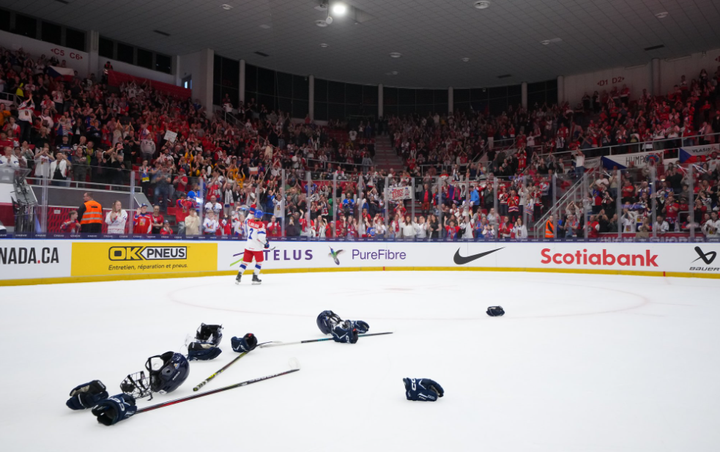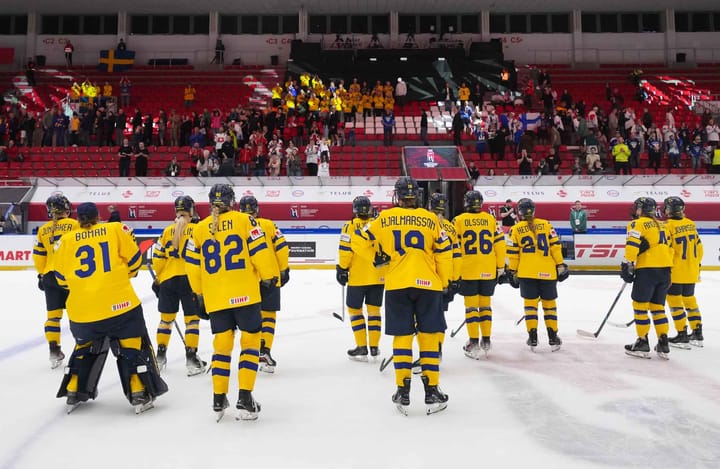Overlooked performances on the 2021 Boston Pride
Three players who made a bigger impact than you might think for Boston
It’s NWHL award season, which means it’s time to reflect on some of the greatest individual performances we saw in the league this year. Every year, there are players who fly under the radar despite being key contributors to their teams and/or among the best talents in the league. Given the frantic and fractured schedule in Lake Placid and the two-day whirlwind of the playoffs in Boston, it is was all too easy for some players to skate outside of the spotlight.
So, we’re hoping to amend that a bit with this series where we’ll highlight a few players from all six NWHL teams who managed to fly under the radar while still making a big impact. In other words, they simply didn’t get enough love. We’re starting things off with the champs — the Boston Pride.
Tereza Vanišová
If you only look at the box scores it would be easy to overlook how special Vanišová was for the Pride this year. She finished Lake Placid with two assists and five minor penalties in seven games. Nothing amazing, right? Well, hold your horses.
Per InStat, Vanišová averaged 4.3 zone entries with stickhandling per game for Boston in Lake Placid and the playoffs. Her speed and ability to fly into the zone with control of the puck made her one of the most valuable and dangerous players in transition in the NWHL this year. That speed helped her create a lot of scoring chances. Vanišová averaged as many scoring chances per game (2.3) as McKenna Brand, despite playing, on average, 3:38 less TOI/GP.
The Czech national team center took her game to another level when the Pride took to the ice for the playoffs. She had a goal and two more assists in two games in the postseason, which brought her total offense up to a total of five primary points — all at even strength — in nine games. Pair that production with her ability to gain the zone and her dominance on the faceoff dot — a 68.96 percent success rate — and you start to appreciate what she brought to Boston this year.
The biggest strike against Vanišová had to be her discipline. In addition to her -3 penalty differential in Lake Placid, she took what could have been a disastrous major penalty in the third period of the Isobel Cup Final against the Minnesota Whitecaps. That, along with her limited ice time of 16:00 TOI/GP caused her to be overlooked by media this year. One has to wonder if her being a European in a North American league also had something to do with it.
Meghara McManus
Getting lost in the shuffle of the Pride’s forward depth was easy to do this year. Boston had the best top line in the league — and maybe in pro women’s hockey — and three other lines that could score and drive possession. Really, it was an embarrassment of riches for head coach Paul Mara to work with. Furthermore, there were six Pride rookie forwards on the roster, including the 1st overall pick of the last draft.
McManus was one of the Pride’s most productive forwards in Lake Placid, which is really saying something. She had five points — four of which came at evens — to finish tied for fourth on the team in scoring in the regular season with Sammy Davis. She averaged just shy of 3.0 SOG/GP (2.85) which underlines just how much she did in a limited role. That’s the big takeaway for McManus. She made a huge impact considering her ice time. Her average time on ice from the regular season and playoffs combined was 11:43 — the third-lowest among Pride forwards.
You could make a case for a lot of Pride forwards here, truth be told. Lexie Laing never gets enough love and Tori Sullivan has some of the filthiest hands in the league. But McManus gets singled out here because she was a rookie who carved out a role for herself on a championship team and found a way to elevate it.
Taylor Turnquist
Turnquist showed flashes of being one of the most promising young two-way defenders in the NWHL this year. She was trusted with the third-most ice time among Boston’s blueliners, averaging 21:03 TOI/GP in Lake Placid and the postseason combined. That’s a pretty big responsibility on a championship team.
Believe it or not, Turnquist had more controlled entries via stickhandling per game (2.2) than any other Pride defender. Bottom line: she is a great skater. That made her a beautiful fit on a Pride team that loves players who can really fly up the ice in the transition game with and without the puck. She played a lot with stay-at-home defender Lauren Kelly, which gave her the freedom to make plays at even strength even though all three of her points this year came on the power play.
The defensive counting stats we have to work with also place Turnquist in a favorable light. She was third among Pride defenders in takeaways and in blocked shots and took just one minor penalty, which she washed out by drawing one. On the other side of the puck, Turnquist had some issues getting pucks to the net but proved to be an accurate and reliable passer. But she might have made her biggest impact in transition.
Turnquist is clearly a skilled puck-carrier that helped Boston get rolling in the offensive zone. And, as we all know, that is where they did the work that won them their second Isobel Cup. She was second only to Kaleigh Fratkin (6.0) in average breakouts per game (5.8) for Boston. Perhaps even more interesting is the fact that she and Fratkin had the same rate of giveaways in the defensive zone per-game (1.11). All players who are asked to carry and control the puck for their team will commit turnovers. What you want to look for is sound decision-making and the ability to make plays. Turnquist can do both.
Overall, there’s a lot to like about Turnquist’s game. She’s one of those “sneaky good” players who requires a deeper look than what her EliteProspects profile will tell you.
Data courtesy InStat and Their Hockey Counts.





Comments ()